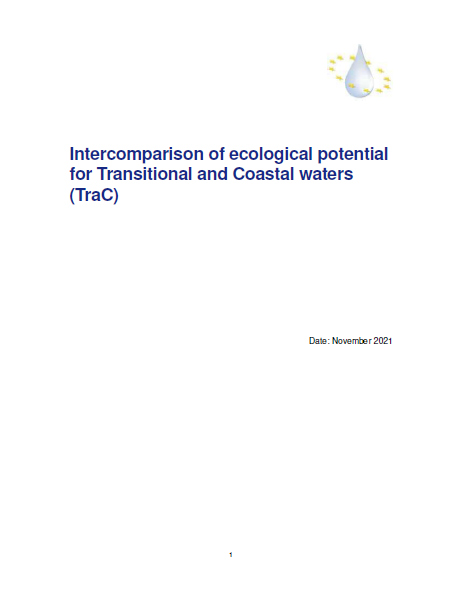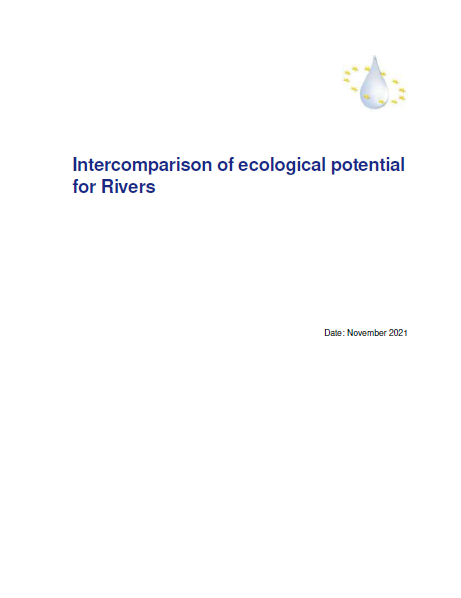Wolfram, G., Konecny, R., Kampa, E., 2021. Intercomparison of ecological potential for Lakes and Reservoirs. Vienna, Berlin: Environment Agency, DWS Hydro-Ökologie, Ecologic Institute.
- Sprache
-
Englisch
- Autorenschaft
-
Georg WolframRobert Konecny
- Credits
Der Gesamtprozess des Vergleichs wurde von der GEP-Kerngruppe unterstützt und geleitet: Martina Bussettini (Italian Institute for Environmental Protection and Research, Italy), Sebastian Döbbelt-Grüne (Arbeitsgemeinschaft Wasserwirtschaft der Länder und des Bundes – LAWA, Planungsbüro Koenzen, Deutschland), Wouter Van de Bund (Joint Research Center der Europäischen Kommission), Katarina Vartia (Swedish Agency for Marine and Water Management, Sweden), Jeanne Boughaba (DG ENV, European Commission), Jan Brooke (Navigation Task Group; Jan Brooke Environmental Consultant Ltd. Wir möchten uns bei allen nationalen Experten bedanken, die den europäischen Fragebogen zum Vergleich des ökologischen Potenzials erheblich veränderter Wasserkörper – Fragebogen B "Seen/Reservoirs" – ausgefüllt haben. Ihre Antworten auf den Fragebogen dienten als Hauptinformationsquelle für diesen Bericht.
- Finanzierung
-
Europäische Kommission, Generaldirektion Umwelt (GD Umwelt), International - Verlag
- Jahr
- Umfang
- 95 S.
- Projekt
- Projekt-ID
- Inhaltsverzeichnis
-
Gesamtes Inhaltsverzeichnis
1 Introduction
1.1 Background
1.2 Aims of the intercomparison
1.3 Purpose and scope of the report
1.4 Structure of report
2 Questionnaire on Intercomparison of Ecological Potential
2.1 Scope of questionnaire
2.2 Structure of the intercomparison questionnaire
2.3 Responses from European countries
3 Examples/case studies on intercomparison of ecological potential for lakes
4 Overview of methods
5 Pre-step. Designation of HMWB & information from earlier planning cycles
5.1 Introduction to step
5.2 Key findings of the intercomparison
6 Definition of MEP
6.1 Step A. Identification of closest comparable water category
6.1.1 Introduction to step
6.1.2 Key findings of the intercomparison
6.2 Step B1. Identify mitigation measures relevant to each of the hydromorphological alterations and ecologically effective in the physical context of the water body
6.2.1 Introduction to step
6.2.2 Key findings of the intercomparison
6.3 Step B2. Exclude mitigation measures with significant adverse effect on use or wider environment
6.3.1 Introduction to step
6.3.2 Key findings of the intercomparison
6.4 Step B3. Select most ecologically beneficial (combination of) measures taking into account need to ensure best approximation to ecological continuum
6.4.1 Introduction to step
6.4.2 Key findings of the intercomparison
6.5 Step C. Derivation of hydromorphological conditions for MEP
6.5.1 Introduction to step
6.5.2 Key findings of the intercomparison
6.6 Step D. Derivation of physico-chemical conditions for MEP, taking into account the closest comparable water body type
6.6.1 Introduction to step
6.6.2 Key findings of the intercomparison
6.7 Step E. Derivation of BQE conditions for MEP
6.7.1 Introduction to step
6.7.2 Key findings of the intercomparison
7 Definition of GEP
7.1 Step F. Derivation of BQE conditions for GEP
7.1.1 Introduction to step
7.1.2 Key findings of the intercomparison
7.2 Step G. Derivation of supporting quality element conditions for GEP
7.2.1 Introduction to step
7.2.2 Key findings of the intercomparison
7.3 Step H. Identification of mitigation measures for GEP
7.3.1 Introduction
7.3.2 Key findings of the intercomparison
8 Implementation of measures to achieve GEP
8.1 Monitoring to assess whether GEP is being achieved
8.1.1 Introduction to step
8.1.2 Key findings of the intercomparison
8.2 Are there GEP measures that are disproportionally expensive or infeasible?
8.2.1 Introduction to step
8.2.2 Key findings of the intercomparison
8.3 Implement GEP measures and monitor effects on BQEs and supporting quality elements
8.3.1 Introduction to step
8.3.2 Key findings of the intercomparison
9 Lessons learned by countries on their methods
9.1 Lessons learned from methods application
9.2 Strengths and weaknesses of methods
9.3 Needs for further guidance
10 Key conclusions on the intercomparison of the definition of ecological potential for Lakes/Reservoirs
11 References
Annex 1: Key references and sources to the methods reported
Annex 2: Empty questionnaire - Schlüsselwörter
-
ökologisches Potenzial, Seen, StauseenEuropa
Kampa, E., Rouillard, J., 2021. Intercomparison of ecological potential for Rivers. Berlin, Ecologic Institute.
Cleveringa, J., Kampa E., 2021. Intercomparison of ecological potential for Transitional and Coastal waters (TraC). Amersfoort, Berlin: Arcadis, Ecologic Institute.

